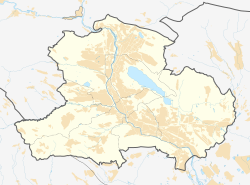History
The temple was opened in June 2015 and is named after Sultan Ezid, one of the holy men of the Yazidi faith. The temple is constructed on land donated by the Georgian Government in 2009, and the construction project was initiated in 2012 by the House of Yezidis of Georgia and financed by local businessmen. [1] [4] At the time of its opening in 2015, it was only the second Yazidi temple outside of Iraq. [3]
Yazidis are one of the ethnic minorities in Georgia, practicing an ancient, monotheistic belief that has similarities to Christianity, Hinduism, Judaism, Sufism and Zoroastrianism along with elements of sun worship. [5] [2] Yazidi religion was officially recognized in Georgia only in 2011. [3]
This page is based on this
Wikipedia article Text is available under the
CC BY-SA 4.0 license; additional terms may apply.
Images, videos and audio are available under their respective licenses.


